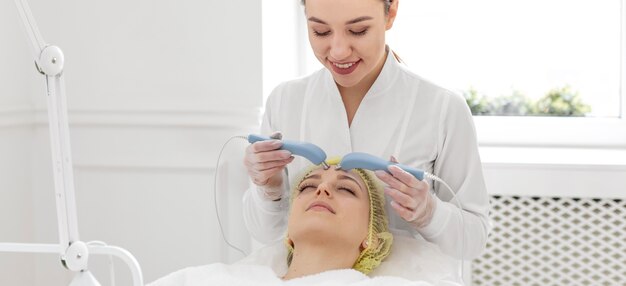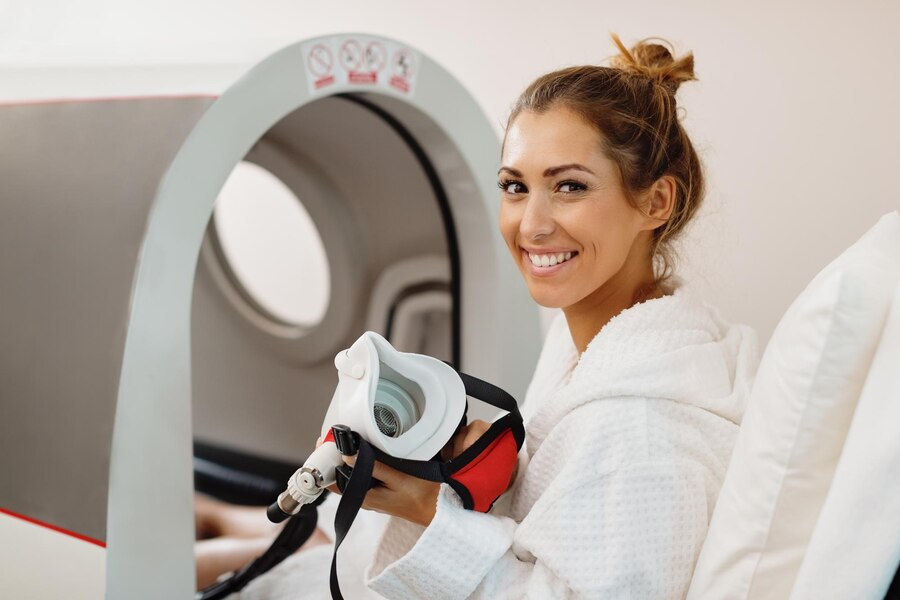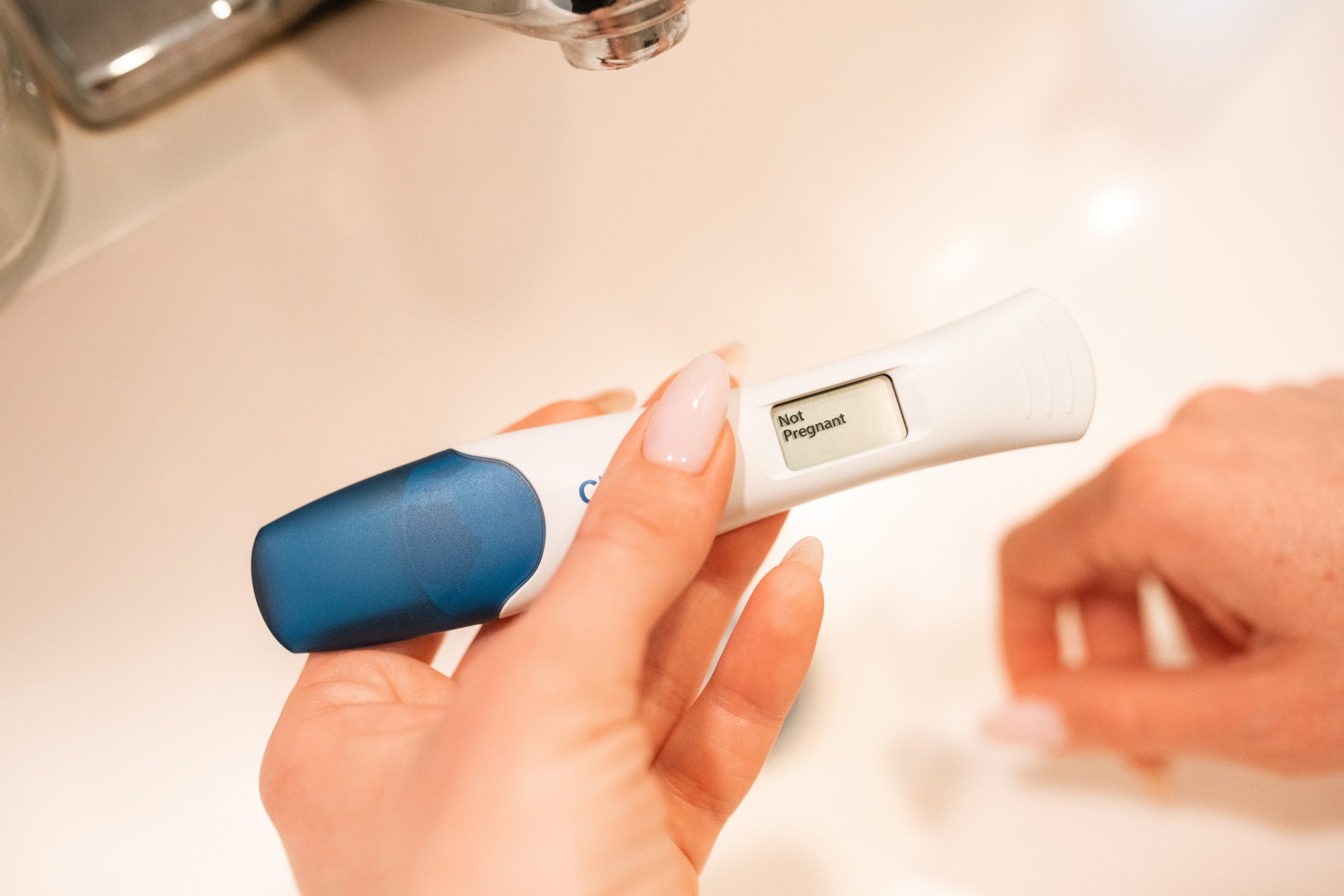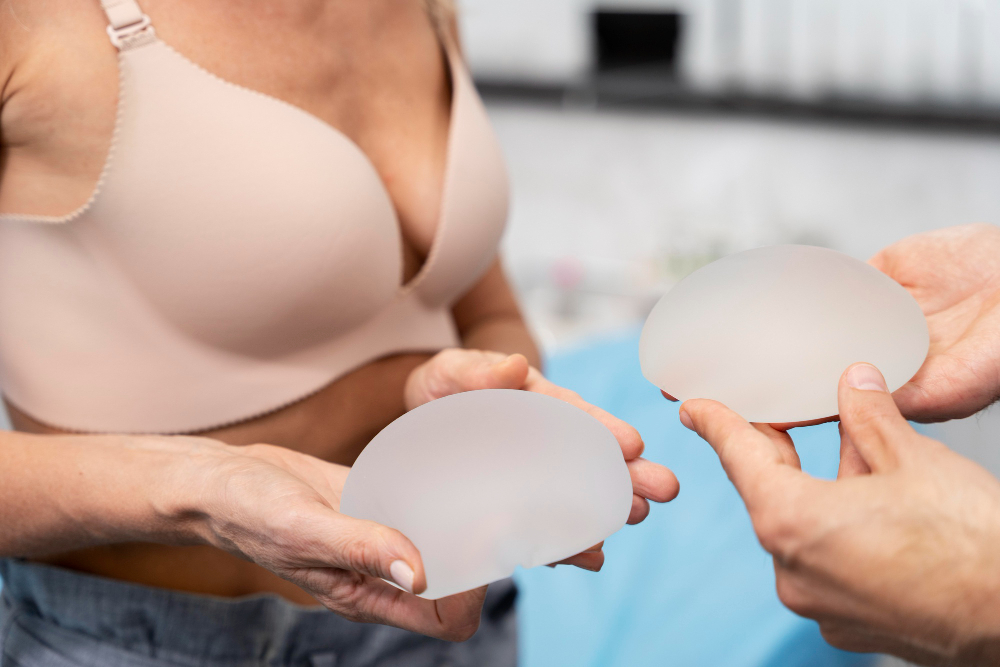
Unveiling Tummy Tuck Scars: What to Expect and Where
A tummy tuck, or abdominoplasty, is a transformative surgery that creates stunning and incredible dimensions for many patients. However, there are many concerns regarding the scarring from an abdominoplasty. This is understandable, as any potential surgery can feel frightening, especially regarding scarring. Patients need to be aware of scarring location and prominence. This can help ease concerns and allow you to make an informed decision.
Along the Lower Abdomen: The Main Incision
Excess skin is removed from the middle and lower abdomen during a full tummy tuck and includes an incision across the lower waist from hip to hip. This incision creates the space visibility for your cosmetic surgeon to eliminate skin and fat from the lower abdomen and the region slightly above the belly button.
A tummy tuck creates a flatter, toned abdominal region and can remove stretch marks in the skin. However, the scar from an abdominoplasty is inevitable as this incision is necessary to create a flatter, toned stomach. The length and visibility of the scar depend on the type of tummy tuck performed and the amount of excess skin removed during the procedure. However, most tummy tuck scars are discreetly placed low on the pelvic region and can be hidden underneath clothes and swimsuits.
Around the Belly Button: Secondary Incision
A full tummy tuck Bellevue can include the incision from hip bone to hip bone as well as a minor incision above the navel. This secondary incision allows the surgeon to restructure the belly button, remove overhanging skin, and eliminate stretch marks that reach higher up on the abdominal region. It also allows the leftover skin to be reshaped and placed in a better location.
The belly button incision is necessary to reshape and reposition the navel and create an aesthetically pleasing core. The scar around the navel is minimal and typically fades over time but does not entirely disappear. Sometimes, the reshaped belly button can change structure with time but never return to its original appearance.
Less Scarring with Mini-Tummy Tuck: A Variation
A mini tummy tuck is a less invasive procedure that creates a smaller scar for those needing minimal skin removal. A mini tummy tuck Bellevue is another type of abdominoplasty that creates a flatter and tighter lower waist. It only removes the appearance of a pooch or overhanging skin in the low abdomen.
The scar from a mini tummy tuck is smaller and runs along the low pubic line, reaching the hips. It does not include a secondary scar above the belly button and requires less downtime during recovery. However, it does not remove as much skin as a full tummy tuck and only focuses on the lower portion of the stomach. Most patients prefer a full tummy tuck for extensive results.
Individual Variations and Considerations
Every patient is unique and responds differently to a cosmetic procedure. The visibility and prominence of a tummy tuck scar depends on the individual patient, their genetics, and how well they care for their scar. Keeping up with topical scar treatments, eating a healthy diet, drinking plenty of water, and avoiding direct contact with the sun can help minimize the appearance of your scar.
Being open and honest with your board-certified cosmetic surgeon about your concerns and potential scarring is essential. During a consultation, your provider can help you make an informed decision and guide you to the right surgery for your needs and overall goals.
Choosing the Right Procedure: Factors to Consider
Potential scarring is not the only factor to consider when deciding if a tummy tuck Bellevue is right for you. When deciding which type of tummy tuck is best for you, consider the amount of skin you need removed. While a mini tummy tuck may have more minimal scarring, it also removes a minimal amount of skin from the lower abdomen.
Both surgeries have incredible benefits depending on your aesthetic goals and concerns. A full tummy tuck provides dramatic results that can reshape the lower abdomen and belly button. However, a mini tummy tuck can help create a beautiful, flat shape for the lower abdomen and has less scarring and downtime.
Conclusion
A full tummy tuck leaves a thin scar from hip to hip and one above the navel. A mini tummy tuck only has one smaller incision that does not reach the hips. However, the scars from a tummy tuck can be well hidden and are not as prominent as you may believe. Open communication with your board-certified plastic surgeon is the best way to determine which procedure is best for you. With time, adequate care, and an experienced provider, scarring from a tummy tuck is nothing to worry about. A tummy tuck Bellevue is a transformative surgery that can increase your shape and confidence.

Unlocking Your True Self: The Objective Path to Facial Feminization Surgery
What is Facial Feminization Surgery (FFS)?
Facial feminization surgery—often abbreviated as FFS—is a gender affirming procedure commonly performed on transgender women. The surgery consists of a combination of facial procedures designed to take traditionally male-presenting features and make them look more female-presenting. This could include surgeries like a brow lift, chin reduction, lip lift, rhinoplasty, and several others.
No two facial feminization surgeries will look exactly alike. The best facial feminization surgery is customized to fit the patient and does not unnecessarily operate on areas that the patient is happy with or which already align well with their preferred gender.
In comparison to the lengthy history of other medical procedures and technologies, facial feminization surgery only began in the twentieth century. The earliest cases of gender affirming surgery took place largely in Germany at the Hirschfeld Institute or otherwise supervised by Dr. Hirschfeld—one of the first doctors to study gender and gender dysphoria.
World War II proved to be a setback in gender affirming care when much of Hirschfeld’s research and his facility were destroyed. Thankfully, hormone therapy became available and greatly benefited transgender people of the time. Gender affirming body surgeries began to take place in more places around the world including the United States.
In 1983, facial feminization surgery emerged in San Francisco. Dr. Douglas Ousterout—a craniofacial surgeon who specialized in plastic surgery—is considered the “father” of facial feminization surgery. Many of the techniques he developed are still used today. It started with a forehead feminization procedure and slowly other procedures like hairline lowering and tracheal shave were added.
Since the 1980s, surgeons all around the world have continued to learn and improve upon FFS techniques. It is now a fairly common surgery for transgender women to seek out.
Reasons to Consider FFS
Transgender people seek gender affirming surgery like facial feminization because it can help treat and alleviate gender dysphoria. Gender dysphoria is a medical term that recognizes the mental anguish, anxiety, depression, and even suicidal thoughts that can come from feeling like their physical form is incorrect or incongruent with their gender assigned at birth.
The severity and degree to which a person may experience gender dysphoria will vary. Some experience no dysphoria, others may only feel it surrounding certain parts of the body, and, finally, some may experience a much more widespread gender incongruence.
Facial feminization takes traditionally masculine features and makes them appear more feminine. A few ways it may do this include narrowing the jaw, reducing the size of the chin, lowering the hairline, shortening and narrowing the nose, reducing the size of the forehead, creating a rounder-looking forehead, and addressing a noticeable Adam’s apple. Of course, there are other possible procedures or results that surgeons may perform to help a patient better align with their individual identity.
Benefits of Facial Feminization Surgery
Transgender women who undergo facial feminization surgeries often experience many possible benefits such as:
- Softer, rounder facial features
- Smaller facial features and structure
- More of a rounded hairline
- Reduces gender dysphoria
- Allows the patient to more easily present as female publicly
- Can help improve symptoms of mental health issues such as anxiety, depression, etc.
- Improved confidence
- Helps boost self-esteem
- Patient is able to see a more accurate self-image in the mirror
- Permanent results
- Customized to fit the specific needs of the patient and their unique anatomy
What Does Facial Feminization Surgery Change?
The exact changes that a specific FFS procedure makes will differ between patients. Though, FFS can address almost every facial structure and feature:
- Hairline: Male hairlines often sit higher up on the skull, begin receding early, and take on more of an M shape. FFS can lower the hairline via hairline lowering surgery, and it can reshape the hairline through hair transplants.
- Forehead: A male forehead protrudes more prominently than a female one. They also tend to have a straighter profile and are larger. FFS helps reduce the projection of the forehead and may subtly reshape it so it takes on a more curved profile.
- Brows: Like the forehead, the male brow bone is much larger and protrudes noticeably. A surgeon may set the brow bone further back and also may shave down the orbital rims which contribute to the appearance of the brows.
- Nose: Female noses tend to be smaller, narrower, and often straighter. FFS commonly helps slim the nose and adjusts the size to better suit a female appearance.
- Midface: Female cheeks may be rounder and include higher cheekbones. While it is rare to get cheek implants, it is not unheard of. Many patients opt for non-surgical enhancements such as hyaluronic acid filler to address the cheeks.
- Lips: The distance between the bottom of the nose and the top lip is shorter in women. A lip lift can help shorten this distance as well as subtly create a more feminine lip appearance. For increased plumpness, many patients choose to get lip filler. However, lip implants are also an option.
- Chin: The female chin tends to be smaller and more rounded. This can be achieved through chin reduction surgery. In rare cases, a patient may benefit from a chin implant in addition to or instead of chin reduction surgery.
- Jaw: The jawline is often shaved to create a slimmer and rounder chin contour.
- Neck: Women do not have as prominent of an Adam’s apple so a tracheal shave can help reduce its projection.
Not every patient will have all of the features addressed. The best facial feminization surgery is custom tailored to meet a patient’s specific goals and needs.
Duration of FFS Results
For the most part, the results of FFS are considered permanent. For example, rhinoplasty, tracheal shave, and any shaving procedure are reliably permanent. Brow lifts and similar procedures may occasionally need touch-ups as a person ages. Additionally, any non-surgical procedures a patient may have done as part of FFS will need regular treatments to maintain results.
Complications of FFS
All surgeries have the potential for complications. As a usually long surgery that addresses multiple areas, FFS can have elevated risks for some patients. Possible complications include infection, visible or raised scarring, asymmetry, unsatisfactory results, and prolonged side effects.
Surgeons who perform the best facial feminization surgeon take steps to minimize and prevent complications:
- Thorough patient screening at the consultation and before surgery
- Patient may stay overnight for monitoring
- Hair transplant performed under local anesthesia to prevent too much time under general anesthesia
- Detailed post-operative instructions
- Regular follow-up appointments
- Starting or ceasing certain prescription medications before or after surgery
- Provide the patient with a realistic idea of recovery and results
Pain and Recovery After FFS
After surgery, it is normal to experience post-operative pain. The face does tend to swell and this can cause discomfort. Surgeons usually prescribe a pain medication and antibiotics. Patients may also take certain supplements to minimize and prevent bruising. However, patients should know that FFS can involve an intense recovery.
Patients will see side effects and pain subside significantly over the first two weeks. Residual swelling can last for months. Patients can usually return to work in two to three weeks. It can take two to three months for patients to get back to their full range of activities.
Recovery Timeline for FFS Surgery
In the initial days following FFS surgery, patients can expect to rest and focus purely on recovering. Patients often need to follow a liquid diet for at least a few days. After a week or so, most bandages can be removed and patients can become more active at home. Patients tend to discontinue prescription medication within a week.
After two to three weeks, patients can return to work and basic activities. However, they should continue to avoid exercise or anything strenuous. Swelling should have gone down significantly and patients should be much more comfortable than they were immediately after surgery.
Two to three months after surgery, patients can return to all of their activities. Some residual swelling may still be present, but largely unnoticeable. Patients can use makeup to hide scarring and should continue to protect their scars with clothing or strong sun protection.
Conclusion
The best facial feminization surgery allows patients more freedom and agency within their lives. It helps to alleviate gender dysphoria and can have other mental health benefits. However, there are drawbacks and risks that patients should be aware of before undergoing the surgery. Meet with a few surgeons, research, and go into FFS making an informed decision. This lets patients feel more confident and often happier with their procedure.

Demystifying Tummy Tucks Popular Questions Answered
What Does a Tummy Tuck (Abdominoplasty) Involve?
An abdominoplasty surgery—also known as a tummy tuck—involves making an incision from hip to hip on the lower abdomen. Commonly, the incision is placed just below the panty line. Occasionally, the incision may extend over the hips. Through this incision, the plastic surgeon removes excess skin and fat from the abdomen. Usually, they will also perform diastasis recti repair which stitches together separated abdominal muscles. This final step helps tone and further flatten the abdomen as well as promote long lasting results by strengthening the abdominal muscles.
Am I a Good Candidate For This Procedure?
Tummy tuck Sarasota patients do share traits that make them an all-around good candidate. A tummy tuck takes several hours to complete and can involve an intense recovery. Thus, requiring a prepared and well-informed patient. Some factors that determine candidacy include:
- Current medications
- Medical conditions
- Previous abdominal surgeries
- If a patient plans to have any future pregnancies
- Ability to withstand general anesthesia
- Amount of protruding stomach consisting of extra skin
- Age
- Long term outlook
- Patient’s understanding of the procedure
- Patient’s goals and expected results
A Few Example Patient Profiles:
After having three children, a woman in her 30s to 40s presents with stretched and separated abdominal muscles (diastasis recti). This has affected her ability to exercise and maintain urinary continence. The patient also has significant extra skin on her lower abdomen. The patient does not plan to have any more children. Thus, she is a good candidate for a traditional tummy tuck surgery.
A 35-year-old man lost over one hundred pounds and experienced sagging, loose skin as a result. The patient is within ten pounds of their final goal weight and has maintained their current lifestyle for several months. The patient could benefit from an abdominoplasty to remove the excess skin on his abdomen.
There are—of course—several other types of patients who may qualify for a tummy tuck. Pregnancy and major weight loss are the two most common causes of the need for abdominoplasty surgery. The best way to determine candidacy is to consult with a qualified plastic surgeon.
Will I Have Visible Scars?
Tummy tuck scars are designed to be placed below the panty line. Thus, they should be concealed by most undergarments and swimsuits. Certain kinds of tummy tucks—namely a fleur-de-lis tummy tuck—may involve more visible scars. Usually, tummy tuck scars are easy to conceal.
Your surgeon may provide tips for managing your scar during and after recovery. For example, making sure to keep the scar out of the sunlight for several weeks or months helps prevent the scar from becoming overly pigmented. Some surgeons may recommend silicone sheets or scar creams.
Can I Have a Mini Tummy Tuck (Mini Abdominoplasty) Instead of Full Abdominoplasty?
A patient may be a candidate for a mini tummy tuck if the extra skin does not extend above the belly button. The incision remains the same, but the abdominal muscles generally do not need to be repaired or tightened. The belly button also is not recreated or repositioned.
Mini tummy tuck patients will have less extra skin and may have tight and intact abdominal muscles. Some women may only need a mini tummy tuck after a single pregnancy or moderate weight loss. The majority of abdominoplasty patients qualify for a fully tummy tuck.
Will Liposuction Work Instead of a Tummy Tuck (Abdominoplasty)?
Liposuction is a minimally invasive surgery that uses a cannula to break up and remove excess fat. It involves only tiny incisions and can treat multiple areas. Many patients undergo liposuction and tummy tuck Sarasota together. In the right patient, they can complement the results of one another.
In rare cases, liposuction may replace a tummy tuck. This is only when no muscle repair is necessary, extra skin is minimal, and the skin is expected to adequately retract.
How Long Does It Take To See Results?
Like most cosmetic surgeries, results are considered final in nine to twelve months. However, patients may see significant results within three to six months. Factors that can slow down recovery include smoking, not following post-op protocols, and returning to activity too quickly.
How Long Do Results Last?
As long as a patient maintains a healthy and active lifestyle, they can expect to maintain their results long term. It is also important that a patient does not get pregnant after a tummy tuck if they want permanent results. Pregnancy stretches the abdominal muscles and often causes extra skin.
What is the Recovery Process Like?
Patients may experience some pain and discomfort after surgery. It tends to be the worst for the week following surgery. Major side effects like swelling and bruising should significantly improve within two to three weeks. Every surgeon will have their unique recovery protocols. However, patients can expect directions such as:
- Remain hunched over to prevent stress on the incision
- Sleep sitting at roughly a 45-degree angle
- Avoid strenuous activities for at least two to three weeks
- Do not smoke
- Get up and walk frequently
- Do not submerge the incision
- Keep the incision out of the sun
- Get adequate rest, eat a healthy diet, and stay hydrated
Will Tummy Tuck Surgery Help Me Lose Weight?
Tummy tuck surgery is not a weight loss surgery. It helps contour the body—especially after weight loss—by removing extra skin. On its own, it does not promote long term weight loss or management. While it can be motivating for some patients, it is not a reliable way to lose weight. Additionally, patients should be close to their goal weight before abdominoplasty surgery. Most patients do not lose any way as a result of tummy tuck surgery. It is best that patients have maintained their lifestyle for at least three months before undergoing a tummy tuck.
Does a Tummy Tuck (Abdominoplasty) Remove Fat?
A tummy tuck may reduce a small amount of abdominal fat. For the best results though, adding liposuction to a tummy tuck will remove more fat. If the primary concern is fat, patients may consider liposuction instead.
How Long Will I Need to Take Off Work After Surgery?
Patients should plan for about two to three weeks off work. However, patients with physical jobs may need longer off or to return on light duty. Every patient’s timeline will look slightly different. Factors that influence return-to-work timelines following a tummy tuck Sarasota include:
- How well the patient heals
- If the patient smokes
- Diabetes or similar conditions
- How well a patient adheres to post-surgery restrictions
- The type of job the patient works
- Pain level and how the patient manages it
When Will I Be Able to Return To My Normal Activities?
Patients may begin to return to light activities that do not place major stress on their incision after two to three weeks. This can include activities like walking, light aerobics, housework, and stretching. However, activities such as intensive cardio or weight lifting will likely need to wait six to eight weeks before resuming.
How Soon Can I Exercise After a Tummy Tuck (Abdominoplasty)?
Patients can take longer, light walks once they feel comfortable. Generally, surgeons recommend that patients wait until the two-week mark or when they no longer need to hunch over. The patient’s surgeon will advise them when they can return to all forms of activity. Thus, it is important to stay in contact with your surgeon post-surgery.
How Painful Is a Tummy Tuck (Abdominoplasty)?
Cosmetic surgeons generally prescribe pain medications following tummy tuck Sarasota surgery. Patients are encouraged to cease them as soon as they feel able. In addition to the pain medications, patients may also receive prescriptions for anti-nausea medication and antibiotics. Patients should take the medications as prescribed.
How Much Does Tummy Tuck (Abdominoplasty) Surgery Cost?
The cost of tummy tuck Sarasota depends on several factors such as location, experience of the surgeon, type of tummy tuck, and any special considerations necessary. Financing is available through outside sources such as Care Credit. Patients should be prepared and explore financial options before their consultation, if possible.
Is Tummy Tuck (Abdominoplasty) Surgery Covered By Insurance?
An abdominoplasty is rarely covered by surgery. One exception is in the case of a panniculectomy. While technically different from a tummy tuck, it performs much of the same purposes, and a tummy tuck is generally combined with pannus removal. A panniculectomy removes a stomach that hangs below the stomach and may obstruct other anatomy or make daily activity difficult.
Can I Combine Other Procedures With a Tummy Tuck?
Combining surgeries—when performed on a patient who is a good candidate for combined surgeries—can lessen recovery time when compared to undergoing two separate surgeries. It also allows patients to recover from both procedures at the same time, cutting overall recovery time. Common and popular combinations include tummy tuck with liposuction, tummy tuck with Brazilian butt lift, and tummy tuck with breast augmentation.
How Should I Prepare Before Surgery?
- To prepare for tummy tuck Sarasota surgery, patients should:
- Obtain any necessary medical clearances
- Secure financing if necessary
- Get time off work
- Make hotel, travel, and childcare arrangements
- Fill prescriptions before surgery
- Have different types of food on hand for recovery
- Wear button down or zip up clothing
What Happens If I Decide to Have More Children After Surgery?
There is no medical risk to having children after a tummy tuck surgery. However, it will likely reverse results and require a revision surgery if the patient hopes to maintain their original result. Patients should closely consider if they want more children or if they are okay with needing future surgery.
Are There Any Risks of Tummy Tuck (Abdominoplasty) Surgery?
Risks of a tummy tuck:
- Infection
- Raised or visible scarring
- Pain
- Muscle tightness
- Opening of the incision
- Skin death
Cosmetic surgeons reduce risk through several methods such as patient screening, limiting bleeding during surgery, and making patients follow pre-op instructions like quitting smoking. Patients may also need to alter their normal medications.
Preparing for Consultation
Dr. Alberico Sessa of Sarasota Surgical Arts has nearly two decades of experience providing the best tummy tuck Sarasota has to offer. When consulting with Dr. Sessa or any other surgeon, research them and the procedure first. Understand the type of results they provide and their credentials. Patients may also prepare questions to ask during the consultation:
- What types of tummy tuck do you perform?
- How do you minimize risk during surgery?
- What previous experience do you have with abdominoplasty surgery?
- Do you routinely combine tummy tucks with other surgeries?
- Do you offer financing options?
- How much does tummy tuck cost?
Patients will likely have their own questions which is encouraged. Make sure that you have all of the information you want and need before moving forward with the procedure. To learn more and schedule a consultation with Dr. Sessa, call us at 941-923-1736. Patients can also reach out online via chat, Price Simulator, and our contact form.

Empowering Physician Assistants with Botox Training: A Path to Enhanced Patient Care
Introduction to Botox Training for Physician Assistants
Physician assistants are extremely skilled medical providers. However, they also can get easily burnt out due to overwork and seeing rough outcomes frequently. Adding to their skill set can help PAs escape the exhausting and unpredictable hospital environment. Botox training can help PAs advance their career and have the opportunity to be their own boss, or at least work in a less stressful environment.
Aesthetic treatments—especially non-surgical ones—are rising in popularity. Social media, Zoom, and increased awareness of the signs of aging, more and more people are seeking out regular maintenance treatments such as Botox injections.
The Role of Physician Assistants in Aesthetic Medicine
Physician Assistants often end up performing the duties physicians do not want to do such as charting, consulting with patients virtually, and managing patient questions and prescriptions. It is easy as a PA to feel left out or like an afterthought. However, being part of an injectables practice or running your own can expand the scope of physician assistants and lead to a more fulfilling experience.
After Botox training for physician assistants, PAs become more valued members of the healthcare team, especially when working in an aesthetic clinic. Their experience and expertise become invaluable for the rest of the team and foster a much more welcoming and giving environment for providers and patients.
The Benefits of Botox Training for Physician Assistants
There are several benefits of Botox training for physician assistants:
- More positive patient outcomes
- See patients at their best instead of their worst
- Administer both cosmetic and medically based treatments in a low-stakes environment
- Diversify medical skills
- Help meet the demand for aesthetic injections
- Better work-life balance
- Offers more opportunities for career advancement
- Work in a smaller and less chaotic environment
- Build lasting relationships with patients
Accredited Botox Training Programs for PAs
Botox training for physician assistants should involve a credible course with hands-on training. While not all states require hands-on training, it is a vital component of becoming a competent and skilled aesthetic injector. Many courses only offer online courses consisting of videos, lectures, and potentially reading material.
The American Academy of Cosmetic Medicine offers a comprehensive Botox training program for physician assistants. Not only do they receive in-person instruction, but physician assistants will also get to inject on a live model (or a silicone model in certain cases). AACM offers both beginner and advanced courses for those with differing experience levels, comfort, and knowledge of Botox injections.
What to Expect in Botox Training for Physician Assistants
Depending on the chosen course, physician assistants can expect to learn skills that they will use frequently as an aesthetic injector. This may include routine Botox treatments such as frown lines or forehead lines. However, the advanced course also covers other uses of Botox such as for jaw slimming, lip enhancement, and chronic migraine treatment.
Hands-on experience ensures that physician assistants leave their Botox training confident in their knowledge and skills. At the end of the course, there is also an examination that can lead to Botox certification from AACM.
How Botox Training Enhances Patient Care
Regardless of whether a PA chooses to fully transition to aesthetic medicine, Botox training can enhance their medical skills. There are several medical uses for Botox and they can better serve patients by recommending or performing Botox treatment. Even in the aesthetic medicine field, certain medical concerns can be addressed such as migraines, hyperhidrosis, and an overgrown masseter muscle. These skills benefit physician assistants in a primary care setting as well as an aesthetic medicine setting.
Additionally, adequate Botox training for physician assistants gives patients more confidence in their providers. A certification from AACM helps patients know that they are in the right hands when it comes to their aesthetic injections.
Navigating Legal and Regulatory Aspects
Each state has its own laws and regulations concerning who can and cannot inject Botox. Physician assistants can inject in most states. Others may require that they work under a medical director who is a physician. PAs should check their state’s requirements to understand what licensure and certifications they may need.
Generally, as long as the person is qualified as a PA and has undergone a certain number of training hours, physician assistants can inject Botox. Many PAs can practice mostly independently when it comes to aesthetic injections.
The Future of Aesthetic Medicine and PAs
Cosmetic injectables have come a long way in just a few decades. They are likely to see a similar trajectory of advancement in the coming years. With more people seeking out non-surgical cosmetic procedures such as injections, it is smart to learn and understand the industry early on. Additionally, PAs serve a vital role in the aesthetic healthcare field. They bridge the gap between nurses and physicians—acting as a mid-level provider who can keep things running smoothly. PAs may also be able to perform more advanced procedures that nurses cannot.
How to Get Started with Botox Training as a Physician Assistant
The journey to becoming a certified Botox injector starts at the American Academy of Cosmetic Medicine. Our certification and training courses provide instructional and hands-on training vital for anyone wanting to enter the aesthetic medicine field. To enroll in our Botox training for physician assistants, fill out our contact form.
Transforming Your Career with Botox Training as a Physician Assistant
Entering the aesthetic medicine field provides physician assistants with the opportunity to grow professionally. The less stressful environment and seeing patients when they are healthy also leads to better patient interactions, outcomes, and care. Ultimately, a career in aesthetic medicine can be an extremely rewarding and fulfilling career. For physician assistants interested in making a shift to aesthetic medicine or who simply want to expand their skills, sign up for our Botox training for physician assistants.

Modern Health: The Hyperbaric Impact
Introduction
In the ever-evolving world of medical advancements, Hyperbaric Oxygen Therapy (HBOT) has emerged as a topic of interest for many. You’ve likely heard of HBOT being highlighted as a cutting-edge treatment in contemporary healthcare circles.
Amidst this discourse, a name that naturally resonates is OxygenArk. Recognized for its commitment to wellness, we seamlessly blend innovative technology with the timeless benefits of increased oxygen.
Perhaps it’s been on your radar, or maybe it’s a term you’ve casually overheard. But what is it about this treatment that’s creating such a buzz? Why are experts and patients alike singing its praises?
As we delve into the nuances of HBOT, we’ll uncover its significance and the reasons behind its rising popularity. Ready to dive in? Let’s explore.
Outline
1. What is Hyperbaric Oxygen Therapy?
2. Applications of HBOT in Modern Health
3. The Experience Inside the Chamber
4. Safety and Side Effects
1. What is Hyperbaric Oxygen Therapy?
HBOT is a medical treatment that involves breathing 100% pure oxygen inside a specially designed, pressurized chamber. To give you a simple analogy, think of it as taking a deep dive underwater, where pressure increases as you go deeper. But instead of water, you’re surrounded by an environment rich in oxygen.
How Does It Work?
Under normal atmospheric pressure, our lungs can only gather a certain amount of oxygen from the air. By increasing the air pressure around us, as is done in a hyperbaric chamber, our lungs can gather more oxygen than usual. This enriched oxygen is then carried throughout the body via the bloodstream.
When our body’s tissues receive this surplus of oxygen, many fascinating things start to happen:
- Cellular Healing: The extra oxygen promotes faster cell growth and regeneration. Imagine giving your cells a much-needed energy drink!
- Anti-inflammatory Effects: The treatment reduces swelling and inflammation, which can help alleviate pain and promote healing.
- Fighting Bacteria: Oxygen-rich blood can help combat certain types of harmful bacteria, aiding the body’s natural defense mechanism.
2. Applications of HBOT in Modern Health
Wound Healing
Particularly for wounds that are slow to heal, like diabetic foot ulcers, HBOT has been a game-changer. It’s like a breath of fresh air for stubborn injuries! The elevated oxygen levels boost cell regeneration and enhance the body’s natural healing processes. This means not only faster recovery but also a reduced risk of complications and infections.
Sports Medicine
Athletes often seek faster recovery methods, especially when high performance is on the line. By enhancing tissue repair, HBOT offers them a quicker return to the field. By reducing muscle fatigue and inflammation, athletes can sustain peak performance longer. This gives them a competitive edge, both during training and in actual competitions.
Brain Health
According to The Wound Pros, HBOT therapy has shown promising results in the treatment of several medical conditions. It has illuminated its potential in bolstering brain function, particularly in managing an array of neurological conditions. HBOT’s oxygen boost is linked to better cognition, memory, and concentration.
Moreover, emerging studies underscore the therapy’s potential in mitigating symptoms of formidable diseases such as Alzheimer’s and Parkinson’s. A few notable applications include:
- Traumatic Brain Injuries: HBOT has been explored as a treatment to accelerate recovery and improve cognitive functions post-injury.
- Stroke Recovery: Some patients undergoing HBOT have shown improvements in motor skills and speech, indicating its potential in stroke rehabilitation.
- Neurodegenerative Diseases: Especially in conditions like Alzheimer’s and Parkinson’s, HBOT is being studied for its potential in slowing disease progression and enhancing the quality of life for patients.
3. The Experience Inside the Chamber
Amid the variety of HBOT providers, “OxygenArk” stands out for its commitment to a natural and holistic approach. Many who have experienced their sessions with us describes it as a one-of-a-kind journey. As the chamber pressurizes, you might feel a slight pressure in your ears, reminiscent of taking off in an airplane or diving underwater.
But once inside, the ambiance is purely serene. Whether it’s reading, meditating, or catching a short nap, the environment allows for utter relaxation during the treatment.
4. Safety and Side Effects
Like all medical treatments, while HBOT is predominantly safe, it’s paramount to be cognizant of the occasional side effects that might arise. Being informed ensures you’re prepared and can make the most of the treatment. Here are some points to delve into:
Sinus Pain and Ear Pressure
Due to the nature of the therapy, some individuals might feel discomfort in their sinuses or ears stemming from the increased pressure. It’s similar to the sensation one might feel while ascending in an airplane or diving deep underwater. Over time, as the body adjusts, these sensations often diminish.
Temporary Vision Cohanges
In rare instances, patients have reported minor and temporary alterations in their vision post-treatment. It’s essential to understand that these changes are transient and often resolve on their own. If they persist, it’s always advisable to consult with a specialist.
Communication with Provider
The cornerstone of any medical treatment is clear communication. Always ensure you relay any discomfort, changes, or concerns you experience to your healthcare provider. Their expertise and advice will guide you through the process and ensure you’re getting the most out of your treatment.
Claustrophobia Considerations
Modern HBOT chambers are a marvel of medical engineering, designed spaciously to maximize comfort. Those with claustrophobia should note that the treatment takes place in an enclosed space. It’s always a good idea to discuss any apprehensions with the provider, as they often have solutions or coping strategies to offer.
Conclusion
In conclusion, HBOT is more than just a buzzword in modern health. Its application in promoting healing, reducing inflammation, and potentially supporting brain health makes it a compelling avenue for therapeutic research and application. With any medical procedure, it’s essential to consult with a healthcare professional to discuss potential benefits and risks.
But as our understanding of HBOT grows, it promises to play an increasingly prominent role in modern medicine. Interested in learning more or exploring HBOT for yourself? Contact OxygenArk today for expert guidance and insights.

6 Lifesaving Practices All Men Should Essentially Follow
This article will discuss 6 Lifesaving practices all men should essentially follow in their daily routines. In particular, two of these practices will address issues affecting their sexual performance and erection.
Taking care of men’s health is often overlooked or taken for granted. For men to live a long and fulfilling life, maintaining good health is essential for longevity and a fulfilling and enjoyable existence.
Lifesaving Practices All Men Should Know
1. Regular Physical Activity
Men of all ages must exercise regularly as part of a healthy lifestyle. It has been shown that regular physical activity has numerous benefits, ranging from maintaining a healthy weight to reducing the risk of chronic diseases like diabetes, heart disease, and even some types of cancer. How does exercise have any relation to sexual performance, however?
Several studies have shown that men who participate in regular physical activity have a lower risk of developing erectile dysfunction because exercise improves blood flow throughout the body, including the genital region. Increased blood flow can result in stronger, longer-lasting erections, which is essential for fulfilling sexual satisfaction.
2. A Balanced Diet
One of the crucial aspects of men’s health is maintaining a healthy diet rich in fruits, vegetables, whole grains, lean proteins, and healthy fats. This diet is extremely important in providing the body with essential nutrients, vitamins, and minerals. As well as contributing to the maintenance of overall health, these nutrients play an important role in contributing to sexual performance as well.
Several nutrients, including zinc and antioxidants, found in fruits and vegetables can help increase sperm production and quality. Maintaining a healthy weight by eating a balanced diet is also important to reduce your risk of developing obesity-related conditions that might adversely affect your sexual performance. Using Fildena 100 mg, men can get an erection by increasing blood flow to the erection.
3. Regular Health Checkups
Men should schedule regular checkups with their healthcare providers to ensure they are monitored and treated for potential health issues as soon as possible. Preventive healthcare is important for early detection and treatment of potential health issues. A doctor can check your blood pressure, cholesterol levels, prostate health, and other aspects of your health during these appointments.
The health of the prostate is especially important as men age. Prostate problems can affect both the quality of urination and the function of the genitalia, so regular checkups can help identify potential concerns early, allowing for timely treatment and intervention.
4. Stress Management
The fact that we each are subjected to stress is a reality, but chronic stress can have serious consequences for our health, such as high blood pressure, heart disease, and even sexual dysfunction. Stress directly impacts the body’s ability to achieve and maintain an erection.
A stress management technique such as deep breathing, meditation, or yoga can be beneficial for both reducing stress levels and enhancing sexual performance. Stress management not only enhances your mental well-being but can also improve the quality of your sexual experience. When experiencing ED, men usually take Cenforce 200 mg to perform well in bed.
5. Sufficient Sleep
His lack of quality sleep often overshadows a man’s health. It is the body’s natural way of rejuvenating and repairing itself. When you consistently fail to get enough sleep, you can develop a host of health problems, including lower libido and poor sexual performance. Sleep is the body’s natural way of rejuvenating and repairing itself.
The body produces testosterone, a hormone vital for sexual function, during sleep. Chronic sleep deprivation can lower testosterone levels, potentially causing erectile dysfunction. The optimal amount of sleep you can get per night to maintain healthy testosterone levels and maximize your sexual performance is 7-9 hours of quality sleep.
6. Limiting Alcohol and Avoiding Tobacco
Both excessive alcohol consumption and tobacco use can potentially hurt men’s health. It is known that both substances are associated with some health problems, including heart disease and certain types of cancer. In addition, they can adversely affect sexual performance as well.
The use of alcohol can adversely affect sexual function by reducing sensitivity and decreasing one’s ability to obtain or maintain an erection. Conversely, smoking damages blood vessels, making it more difficult to achieve and maintain erections because it limits blood flow to the penis. Men can improve their sexual performance and overall health significantly by limiting their alcohol intake and by avoiding tobacco.
Additional Tips for Sexual Health
The following are some more tips that will help you boost your sexual health in addition to these practices:
Kegel Exercises:
By exercising these muscles regularly, you will be able to strengthen the muscles that control erections and ejaculations, such as the muscles in the pelvic floor. In terms of treating ED, Cenforce 150 mg reviews are positive.
Stay Hydrated:
Drinking enough water is one of the best ways to ensure you are not dehydrated, which can affect your blood flow and overall energy levels.
Communication:
The key to a satisfying sexual relationship is to be open and honest with your partner about your desires, preferences, and concerns.
Safe Sexuality:
To prevent the spread of sexually transmitted diseases to you and your partner, you should always practice safe sex.
Educate Yourself:
You will learn about sexual health, different sexual practices, and what is considered healthy and normal for your body and age regarding your sexual life.
Incorporating these practices into your daily life can significantly improve your health and sexual well-being. It is important to remember that even small changes can result in long-lasting changes. Prioritizing your health will enable you to live a longer and more satisfying life and a more fulfilling and satisfying one.
Final Words
Powpills.com is the best online pharmacy for generic medications that give a hassle-free experience. All men interested in living a healthy and fulfilling life should consider these six lifesaving practices as a prerequisite to achieving this goal. The importance of regular physical activity, a balanced diet, regular health checks, stress management, adequate sleep, and the avoidance of excessive alcohol and tobacco use is vital not only for longevity but also for maintaining sexual performance and satisfaction as well.

The Ultimate Guide to TTC Treatment: What You Need to Know
A Comprehensive Guide to Trying To Conceive Treatment (TTC) Options
For many young couples, one of the most exciting times is when they are beginning to plan for having children. Even with all the changes that children bring, most young couples look forward to bringing children into the world and raising a family. However, it is more challenging to conceive than you may think. The process can be stressful and filled with expectations, limitations, and the possibility of conception difficulty.
Many couples can try for years without much luck. Thankfully though, healthcare continues to improve and there are many treatment options available to improve your capacity to conceive. Having a healthcare professional guide you through the process of starting a family can ensure you are doing so successfully and taking the proper health precautions early on in the child’s development.
Difficulties in Conceiving a Child
Getting pregnant may seem like a fairly easy task to a young couple. However, genetics, certain health conditions, stress, injuries, hormonal imbalances, and more can make the process difficult. When problems with conceiving a child first crop up, many couples believe they need a little patience for conception to occur. While this may be true in most cases, underlying causes complicate the conception process that should be examined and looked into if conception proves evasive.
There are usually several stages of treatment for infertility. The first phase usually involves an appointment with an OBGYN doctor who will begin the process of helping the couple conceive. Having an OBGYN that you see regularly and trust is important for your overall well-being and increases your chances of having a child. If you do not currently have an OBGYN you should consult your primary care physician on who they would recommend.
Initial appointments with an OBGYN doctor often start with an essential examination and a list of recommendations to follow to bolster the chances of conceiving. These often include:
- Timing Intercourse To Coincide With The Woman’s Cycle Of Ovulation
- Lifestyle Changes
- Stress Reduction
- Hormonal Treatments
- Fertility Drugs
More Comprehensive Remedies For Fertility Problems
If these remedies fail to work after 6-8 months, the physician may recommend a phase two treatment plan. This usually consists of a series of tests to see if any underlying conditions affect the couple’s ability to conceive. These types of fertility tests are generally done on both the man and woman and include tests such as:
- Advanced Testing And Treatment For Hormone Levels For Both the Man and Woman
- Checking The Man’s Sperm Count
- Checking For Underlying Conditions Such as Endometrioses
- Testing For Ovulation Egg Production
After these tests have been completed, if there are any remedies available such as hormone therapy and fertility drugs, that can prove helpful, they are started. In most cases, these treatments prove successful though it may take as long as 2-3 years for pregnancy to occur. Although doing all of these steps can be exhausting, you must be patient with yourself, your partner, and your physician team. It may take time, but success can happen.
Advanced Conception Methods Alternatives
Couples who are unable to conceive traditionally often consult with a fertility specialist at a clinic or private practice when all other avenues have been exhausted without success. The specialist will then review the causation of infertility and look at the potential for surgical intervention or advanced fertility procedures.
Before choosing a fertility clinic make sure to ask questions about their specializations and if they take your health insurance plan. Different clinics have different success rates so it is important to shop around and choose the best option based on your situation and what you can afford.
Ask them about their pregnancy rate per cycle, the pregnancy rate per transfer, and the live birth rate. Often times you can find this on their website. The pregnancy rate per cycle will indicate how many have success when it comes to conceiving during their regular cycle. The pregnancy rate per transfer means the patient required embryo transfer for a successful pregnancy. The final statistics explain how many patients have a live birth at that particular treatment center.
You want to make sure that you not only have a good chance of conceiving with the help of this clinic but also carry the child to term. Make sure to also let your primary care physician know you plan on seeking out a fertility specialist as they may have a referral in mind.
Understanding Advanced Medical Procedure Options For Infertility
After an extensive exam and OBGYN medical records are obtained, fertility specialists often recommend more advanced fertility treatments to aid in the conception process. These treatments can include:
Surgery-A surgical treatment option can be especially vital to help unblock fallopian tubes, reverse sterilization procedures in either a man or woman, as well as procedures to retrieve eggs or sperm to be used for more advanced techniques of conception.
Intrauterine Insemination (IUI)– This procedure involves placing a thin tube, also known as a catheter carrying sperm directly into the woman’s uterus to the egg for fertilization. This procedure is often accompanied by the woman taking fertility drugs to ensure her ovaries produce at least one viable egg.
Couples who embark on the IUI procedure may choose to use their sperm or eggs, or if this is not a viable option, they may use donated sperm or eggs for conception. This is also the process often used for surrogacy to carry the pregnancy to term and delivery.
In Vitro Fertilization (IVF)– This procedure involves the surgical removal of a woman’s egg or eggs, often induced by fertility hormone drugs. The eggs are fertilized with sperm in a lab to produce one or more viable embryos. The successful embryo or embryos are then inserted into the woman’s womb through a thin tube to create a pregnancy so it can be carried to full term.
When IVF is chosen, the parents can use their sperm or eggs or donate sperm, eggs, or embryos, depending on their infertility needs.
Embryo Transfers– This procedure involves transferring one or more embryos from a previous IVF procedure into a woman’s womb that has been preserved and frozen in a process known as cryopreservation.
Consulting a Fertility Counselor
Going through fertility treatment can be physically and emotionally draining. There can be a lot of negative emotions that cause high levels of stress. This can leave you wondering if you still want to continue with the treatment if you have not had much success early on in the process. This can also cause strain on your relationship with your partner and your self-esteem.
If you find going through this treatment, is taking a toll on your mental health, consulting a fertility counselor can be a tremendous morale boost and remind you of why you want to have a family. They can also guide you through complex medical decisions together with your partner. After a successful conception, they can also provide you with parenting resources so that you are best equipped with raising your child.
In the unfortunate event that the pregnancy or treatment was not successful, a fertility counselor can also counsel you with this. They can help you explore other options such as surrogacy or adoption should you choose to go down that road.
Conclusion
Sometimes conceiving a child is not as easy as you may think. While it may seem like those in your social circle have had an easy time starting a family, this is not always the case. It is a lot more common than you may think to have reproductive problems. For 20% of people, it may take two years or more to conceive a child. Don’t feel shame or give up hope if you require medical intervention as this is more common than you may think.
With the right medical team, you and your partner can conceive a child. There are a number of treatment options available to you now with the advancement of technology. This begins with timing of ovulation, lifestyle changes, fertility medications, and hormonal treatment. If these do not work your physician can then explore underlying sexual health conditions such as endometriosis and low sperm count. From there if these are not successful various surgical options exist. Discuss what is right for your situation with your doctor and good luck on your journey to starting your new family!

Achieving Youthful Aging: Top Surgical and Non-Surgical Anti-Aging Treatments
Everyone has heard of aging gracefully, but not many people think about aging youthfully. Youthful aging requires looking at age in a different light, and instead of fighting the aging process, taking steps to promote youthfulness throughout our years. Youthful aging sustains confidence and self-image, no matter what age a person is. Everyone deserves to feel amazing in their skin, especially as they age. Your golden years shouldn’t be filled with a negative self-image but instead full of the radiance and wisdom age can bring. Here are some ways you can promote youthful aging in your own life.
Facial Cosmetic Surgery And Its Benefits
A great way to promote youthful aging is through anti-aging procedures. Cosmetic procedures aid in tightening the skin, contouring the jaw and cheekbones, and brightening the eyes. Procedures like facelift, brow lifts, and eyelid lifts bring youthful rejuvenation back to the face. Patients who undergo facial cosmetic surgery can experience youthful benefits such as:
- Eliminate fine lines around the forehead, eyes, and mouth
- Tighten loose skin around the cheeks, neck, and jaw
- Improve facial contours and rejuvenate facial skin
- Reduce the appearance of crow’s feet
- Correct asymmetry in the face
- Reduce sun damage on the skin
There are many incredible benefits to undergoing these procedures. Most patients report feeling years younger and regain their sense of confidence and well-being. Anti-aging procedures provide more than just turning back the clock for your skin. They allow the patient to look like they feel on the inside and maintain a youthful glow for decades to come. Some standard surgical procedures include:
- Eyelid Lift to correct any sagging or aging around the eyes
- Rhinoplasty or other nose-altering surgeries
- Facelift
- Neck lift
- Laser skin resurfacing to eliminate skin damage and scars
The Power Of Medical-Grade Skincare
Skin absorbs everything we put on it, including all the toners, serums, and creams we invest in. With all of the self-proclaimed “miracle” skincare, finding the best options for your skin can be challenging. Over-the-counter skin care isn’t necessarily wrong for a person’s skin, but it doesn’t provide the high-quality ingredients that promote youthful aging like medical-grade skincare. Medical-grade skincare can penetrate the skin deeper than over-the-counter products, providing better hydration, cleaning, and correction for all skin types. Additionally, the ingredients are more concentrated and perform at a higher rate than brands one finds in the drugstore.
Medical-grade skincare is FDA-approved and tested skincare that has been proven to benefit the skin in various ways. It contains higher-quality ingredients such as:
- Peptides
- Antioxidants
- Retinol
In addition to the improved ingredients, they often contain more significant amounts of these ingredients than over-the-counter skincare. Medical-grade skincare also eliminates the trial-and-error process that comes with over-the-counter skincare. These products are tested and work for each patient’s unique skin. Medical-grade skincare can be personalized, and certain products target individual concerns. Dermatologists and Raleigh plastic surgeons can both prescribe medical-grade skincare for patients.
A More Personalized Approach
One of the best ways to promote youthful aging is to work with your provider to create a personalized approach for your skin. Experienced cosmetic surgeons can combine surgical and non-surgical techniques to rejuvenate the skin and revitalize the face. Every patient is unique; some patients may need more skincare than surgical procedures, while others may require more. Combining medical-grade skincare with cosmetic procedures produces the best results for youthful aging. The right provider will be more than willing to create a custom and personalized plan for every patient.
Embrace Youthful Aging
Ultimately, youthful aging combines the idea of aging gracefully with treatments to promote a youthful appearance. By embracing the idea of aging and actively working to create rejuvenated, youthful skin, patients can experience the incredible benefits of youthful aging. Gaining confidence in who you are can also provide excellent benefits. Confidence will help the patient make informed and better decisions about surgical and non-surgical techniques to provide radiant, young skin. The benefits of embracing youthful aging include the following:
- Increased mental health
- Easier time falling and staying asleep
- Reduced chances of migraines
- Improved self-confidence and self-image
Overall, embracing youthful aging can significantly change a patient’s life. By choosing to change certain signs of aging and accept the rest gracefully, a patient can experience the joys and wonders of aging without stressing about their appearance. No one should have to accept fine lines or sagging skin without a plan in action. Youthful aging is one of the greatest benefits of the modern age.
Conclusion
Youthful aging with surgical and non-surgical treatment significantly improves a patient’s confidence and self-image. Dr. Jindal, a Raleigh plastic surgeon at Jindal Institute of Youthful Aging, has provided youthful aging procedures and treatments for decades. Through his care and dedication, Dr. Jindal knows how to help every patient on their unique journey to age youthfully and gracefully.

Everything you need to know about Egg Freezing
Pregnancy is a natural process, but for many couples, it becomes hard to conceive for various reasons like late marriage, chronic disease etc. Hence for most couples, egg freezing has become a ray of hope to attain pregnancy even later in life. Egg freezing, or what you can call fertility preservation, is an intense and overwhelming process; if you want to know about it in detail then this blog is for you.
What is egg freezing?
Women are born with around 1 million eggs, which keep decreasing with age. Oocyte cryopreservation is a technical name for egg freezing, in which eggs are harvested, freeze and stored to attain pregnancy later on.
In the process, medications are given to patients to stimulate ovaries for the growth of various follicles (follicles are fluid-filled bags, that contains eggthas). After follicles attain a specific size, your fertility specialist will retrieve eggs and freeze them. The whole process takes around two weeks.
Egg freezing treatment
Firstly, your doctor will conduct a blood test to know the egg supply in your body. They might suggest an ultrasound to see the number of follicles and ensure that ovaries can be easily reached during egg retrieval.
Some doctors may suggest taking hormonal birth control before fertility medications to let all the follicles grow together at the same rate and size. Women who are willing for this, will be given hormonal medications once or twice a day. These shots will be recommended for eight to ten days for follicles stimulation and growth.
The patient must visit the doctor frequently to measure the follicles and estrogen levels. More prominent follicles have more chances of having matured eggs. Although a woman has thousands of eggs, they don’t respond to the medications. After a week of this process, patients are given medications to stop ovulation so that eggs are not released before they are retrieved. Once the follicles attain a specific size, the patient is given a ‘trigger shot’ to release eggs for retrieval. Through this process, only matured eggs are frozen.
The risk involved in egg freezing
Egg Retrieval and freezing have specific risks and side effects like any other medical procedure. Medications for ovary stimulation can increase the estrogen level to 10 to 20 times higher than the regular menstrual cycle. Hence patients can experience mood swings because of higher estrogen levels. They may also feel bloated as their ovaries are enlarged to grow multiple follicles.
If you have a history of blood clots, your doctor may recommend blood thinner and other medications. Bleeding and infection are risks involved during egg retrieval, but complications are not severe. Because of anaesthesia given during egg retrieval patient may experience nausea or vomiting.
Usually, it costs vary from clinic to clinic, but a single cycle will generally be between INR 150000-170000. Patients can become pregnant in one or two cycles.
Who can take advantage of egg freezing?
Women at a young age have higher chances of achieving success through egg freezing than women in older age. Hence if you want to freeze your egg, try to do it at a young age or as early as possible. The chances of becoming pregnant through frozen eggs lie between 2-12%. There are multiple factors which will affect your chances of conceiving.
The following are the reasons why you can go with egg freezing:
Career and educational plans:
Women who want to get advanced degrees or a demanding career can freeze their eggs at a young age to get healthy eggs later.
Personal circumstances:
Women, who want to spend a long duration with their partner without any child, can freeze their eggs for future use. Same-sex women can also take advantage of egg freezing.
Cancer:
Chemotherapy and other cancer treatment may hamper your fertility. In the case of reproductive cancers, doctors need to remove ovaries. In such cases, the egg-freezing procedure work as a boon.
Factors to consider before egg freezing
There may be some side effects:
Every woman is different, and so are the side effects. You may feel bloating, moodiness, breast tenderness or cramping.
The expense of egg freezing:
Most fertility treatments are expensive, and egg freezing is not an exception. It would help to inquire about the overall cost before undergoing this process. You need to check with your insurance company about such coverage.
How egg freezing is different from embryo freezing
Egg freezing can be done early, even when you don’t have a partner. While embryo freezing requires your partner’s sperm, in which the eggs are fertilized with sperm and will undergo in-vitro fertilization before freezing.
Conclusion
Taking decisions regarding your fertility treatment is stressful for many couples. Many couples are opting for the egg-freezing process because of their career plans or chronic diseases. However, you must consult at a fertility treatment center or your doctor regarding this and know its success rate and other factors to attain pregnancy in your later stage of life.

Will Breast Implants Last A Lifetime?
What Are Breast Implants?
Breast implants are a great option for women who want to enhance their breast size, improve breast shape, or create flattering body proportions. Breast augmentation improves self-confidence, fixes breast asymmetry, and can improve breast appearance after pregnancy, breastfeeding, and the effects of age. Choosing to undergo breast surgery is a major life decision that every woman should feel well-informed about before deciding if it’s right for them.
Breast implants do not last forever. However, many FDA-approved implant options can last for ten to twenty years. The two main options for breast implants are silicone and saline. Saline implants are the safest type of implant but do not give the most natural look or feel. Silicone implants are still extremely safe and provide a more natural look to the breasts. The newest type of implant, the “Gummy Bear” implant, is a silicone implant with an adhesive gel preventing the silicone from leaking into the body if the implant ruptures.
The Average Lifespan of Breast Implants
The average lifespan of breast implants is around ten to twenty years. In rare cases, some women can have implants for over twenty years. It’s common for many women to have replacement surgery around the ten-year mark due to wanting to improve their implants or complications with the implants. However, breast implants do not have an expiration date. As long as there are no complications and a woman is happy with her implants, she can keep them as long as she would like. It’s important to maintain yearly visits with your surgeon to ensure the implants are still in good condition.
Signs You Need Replacement Implants
Most women don’t experience complications with breast augmentation and keep them for ten to twenty years before needing a replacement. Most replacements are done to get ahead of any complications that could arise. However, there are signs you may need an implant replacement.
Capsular Contracture
Capsular contracture, or “breast hardening,” occurs when scar tissue hardens around the implants. This can cause various issues, including tightness, breast pain, and tenderness. It can also cause the implant to move higher on the chest or become asymmetrical.
Implant Rupture
Both saline and silicone implants can sometimes rupture. When a saline implant ruptures, the saline will immediately deflate, alerting the woman to the rupture. The change in breast size will be drastic and noticeable. Sometimes it happens all at once, like a balloon pop, or sometimes it happens over the course of a few days, like a balloon deflating. When a silicone implant ruptures, it won’t be as noticeable as when a saline implant ruptures. However, women may feel a slight burning in their breasts, indicating silicone rupture. Any rupture of breast implants will require an implant replacement.
Rippling
Rippling is when an implant develops wrinkles or “ripples” below the skin. This can occur from weight loss, scarring, or volume loss with saline implants. Many women can also feel the rippling and may want to have an implant replacement to correct the look and feel of the breast.
Implant Malposition
Implant malposition occurs due to gravity, age, loss of skin elasticity, or weight changes. Breast implants begin to move and shift as a woman ages and can settle in less-than-ideal spots. They can settle in the bottom of the breast tissue, which is the most common area for implants to settle with time. They can also settle on the sides of the breasts or higher up on the breasts. Typically, this is a result of capsular contracture. If any of this occurs, many women will want an implant replacement, as the placement can be uncomfortable and look unnatural.
Prolonging The Lifespan of Implants
You can prolong the lifespan of your implants by following a few rules and recommendations. First, follow your surgeon’s post-op recovery rules. The cosmetic surgeon will have you wear a surgical bra to help with the swelling and healing process. You should not exercise, sleep on your chest, or raise your arms above your head while you heal.
After the recovery period, there are a few ways to maintain the longevity of your implants. It’s important to wear bras that fit and support your breasts. Try to avoid sleeping on your stomach or sides, don’t smoke, maintain a healthy weight, avoid any weight on the breast area, and maintain follow-up appointments with your cosmetic surgeon to ensure your breast implants are in good condition.
Conclusion
While implants won’t last a lifetime, implant replacement surgery is beneficial for aiding any issues that arise with implants and time. However, there are ways to ensure your implants remain in good condition for a long time, by wearing supportive bras, maintaining a healthy weight and lifestyle, and protecting your implants from harsh impact. The best way to promote implant longevity is to work with a board-certified cosmetic surgeon and follow all post-op and implant instructions.









